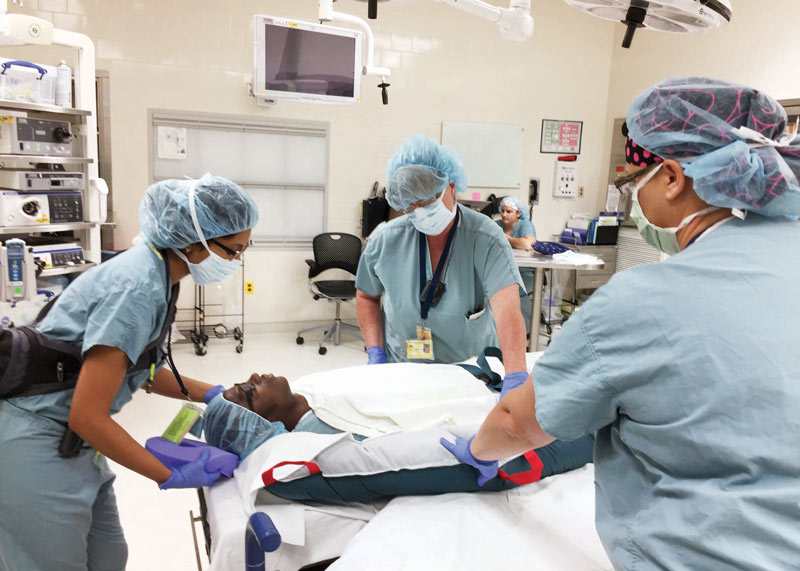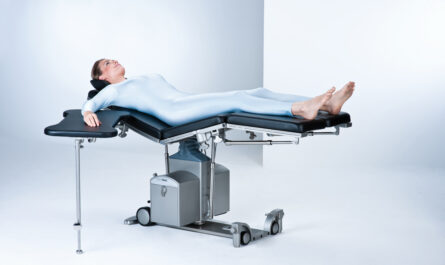Patient lateral transfer devices aid in safe and easy transfer of patients from one surface to another like beds to stretchers, wheelchairs, and operation tables. Growing geriatric population is more prone to disabilities and chronic diseases requiring frequent hospitalization and emergency services, augmenting the demand for patient handling equipment including lateral transfer devices. Products like air-assisted lateral transfer mattresses, sliding sheets, and transfer boards provide comfort and safety to both patients and caregivers during transfer.
The global patient lateral transfer devices market is estimated to be valued at US$ 350.91 Mn in 2023 and is expected to exhibit a CAGR of 8.7% over the forecast period 2023 to 2030, as highlighted in a new report published by Coherent Market Insights.
Market Dynamics
Growing Geriatric Population: The aging population across the world is rising exponentially. As per the United Nations report, there were around 703 million people aged 65 years and above globally in 2019 which is projected to double and cross 1.5 billion mark by 2050. with elderly more susceptible to disabilities, chronic diseases and other health issues requiring frequent hospitalization, there is an increase in the demand for assistive devices like lateral transfer devices for safe patient handling.
Rising Incidence of Disabilities: Conditions like spinal cord injuries, multiple sclerosis, cerebral palsy leading to disabilities hampering mobility are on the rise. Disabled population requires supportive equipments and assistance during transfers increasing the need for patient lateral transfer devices in hospitals, long-term facilities and homecare settings. As per WHO, over 1 billion people accounting for about 15% of the world’s population lives with some form of disability.
Segment Analysis
The global patient lateral transfer devices market is dominated by the air-assisted lateral transfer mattresses sub segment. These mattresses help in easy transfer of patients between beds, stretchers, chairs and others surfaces without lifting or causing any discomfort to the patient. Their increased adoption over manual transfer devices across various healthcare settings such as hospitals, emergency departments, home care facilities etc is driving the growth of this sub segment.
PEST Analysis
Political: Governments across various countries are increasingly investing in healthcare infrastructure and promoting safe patient handling practices to reduce work-related injuries among caregivers. This is encouraging the adoption of lateral patient transfer devices.
Economic: Rising geriatric population prone to disabilities and chronic diseases is leading to higher healthcare spending. This increasing demand for quality medical services and caregiver safety is boosting investments in lateral transfer aids.
Social: Growing awareness about rehabilitation services and importance of proper transfer techniques for patient safety is positively impacting the market growth.
Technological: Integration of lightweight materials, ergonomic designs and powered features in lateral transfer aids are enhancing their effectiveness while reducing caregiver fatigue. This technological innovation is expanding the market scope.
Key Takeaways
Global Patient Lateral Transfer Devices Market Demand is expected to witness high growth over the forecast period of 2023 to 2030. The global Patient Lateral Transfer Devices Market is estimated to be valued at US$ 350.91 million in 2023 and is expected to exhibit a CAGR of 8.7% over the forecast period 2023 to 2030.
Regional analysis – North America dominates the market currently owing to supportive government initiatives and presence of major device manufacturers in the region.
Key players analysis – Some of the prominent players operating in the patient lateral transfer devices market are ESI Group, COMSOL, Numeca International, Ansys, EXA Corp., and Aspen Tech.
ESI Group designs and develops computer-aided engineering software that help companies design better performing lateral transfer products. COMSOL conducts research to optimize product designs through simulations while reducing physical testing. Their expertise in modeling complex physical systems aids key market players.
*Note:
1. Source: Coherent Market Insights, Public sources, Desk research
2. We have leveraged AI tools to mine information and compile it




